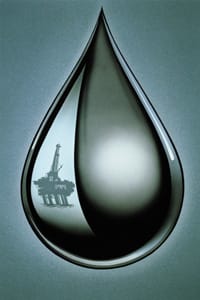street
sense
Stocks Choke on High-Priced Oil
The world is now in the midst of its third oil shock in 30 years. This crisis will be the hardest to overcome.

In the past 30 years, the world has experienced three major instances of sharply rising oil prices. Each of these "shocks" has been accompanied by big drops in the stock market. In this column, I'll examine the correlation between oil prices and stocks, and explain why the current oil price shock presents more long-term problems for the industrialized world than the previous two crises.
OPEC Changed the Rules
Until the early 1970s, the industrialized nations had always taken low oil prices for granted. These countries were able to practice a form of economic colonialism, providing the technology to tap into vast third-world oil reserves while keeping oil prices artificially low. But that all ended in 1973 when the major oil-producing countries combined to form the Organization of Petroleum Exporting Countries (OPEC), a cartel with the power to set worldwide oil prices.

Though some of that market drop was due to investor panic, much of it was justified. Sharply rising oil prices essentially represent an added tax on every company and consumer. That's simply because energy is a basic component of human economic activity. The oil shock of 1973-74 was a rude awakening for the industrialized nations. It let them know that they no longer could control world commodity prices for their own benefit.
Interestingly, the United States responded to the first oil shock with good ideas, such as developing alternative fuels and mandating that auto manufacturers produce more fuel-efficient vehicles.
Price Stability Eased Fears
The second oil shock occurred in 1979-80 and was the result of a bitter war between Iran and Iraq, two key oil-producing nations in the Middle East. Again, oil prices soared to nearly $40 a barrel, worldwide stock markets dropped, and members of Congress deplored U.S. dependence of foreign oil.
But the end of the Iran/Iraq war brought a new sophistication to the OPEC nations. OPEC learned that its interests were best served by managing oil prices so as not to scare the industrialized nations into fuel efficiency or alternative energy sources.
As OPEC successfully managed oil prices through the 1980s and 90s, the United States forgot all about energy conservation and built millions of gas-guzzling SUVs.
The 1973-75 oil shock was created by third-world countries finally flexing their economic muscles. The 1979-80 shock was caused by a war. These crises were fairly easy to overcome because they had little to do with the supply/demand equation. During these crises, there was always enough oil available to serve the needs of the industrialized nations, albeit at high prices.
This Crisis is Different
However, the current oil shock has been caused by the rapid industrialization of countries such as China and India, which has created a true supply/demand imbalance. OPEC wants to pump more oil now to meet demand, but its members are all pumping near capacity.
Today, as crude oil hovers near $50 a barrel, no simple solution to this oil crisis is anywhere in sight.
Ophthalmology Management Senior Editor Jerry Helzner has written more than 50 articles on stock investing for Barron's. He has been a regular stock market columnist for other business publications and was a member of the equity research department of a major regional brokerage firm. E-mail your stock market questions to him at helznergi@boucher1.com.








